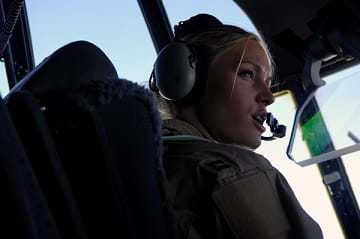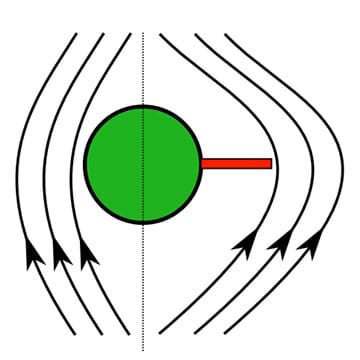Quick Look
Grade Level: 4 (3-5)
Time Required: 45 minutes
Expendable Cost/Group: US $0.00
Group Size: 4
Activity Dependency: None
Subject Areas: Science and Technology

Summary
Students review information learned during the past five lessons and activities of the Intro to Engineering unit. Working in teams, they create flyers/brochures and five-question quizzes about various types of engineering that they test with another team and then share with the class. Then the class participates in a game of "Engineering Jeopardy," using the team-prepared quiz answers/questions. The flyers/brochures and quizzes with answer sheets are collected into an "Olympic Engineering" binder for the class to keep and contribute to during the year. A concluding unit quiz is provided.Engineering Connection
It is important for engineers to have good communication skills. Engineers usually work in teams, and are responsible to clearly explain their ideas and designs to others.
Learning Objectives
After this activity, students should be able to:
- List seven different kinds of engineers: biomedical, chemical, environmental, civil, electrical, mechanical and aerospace.
- Explain which kind of engineering they are most fascinated with and why.
Educational Standards
Each TeachEngineering lesson or activity is correlated to one or more K-12 science,
technology, engineering or math (STEM) educational standards.
All 100,000+ K-12 STEM standards covered in TeachEngineering are collected, maintained and packaged by the Achievement Standards Network (ASN),
a project of D2L (www.achievementstandards.org).
In the ASN, standards are hierarchically structured: first by source; e.g., by state; within source by type; e.g., science or mathematics;
within type by subtype, then by grade, etc.
Each TeachEngineering lesson or activity is correlated to one or more K-12 science, technology, engineering or math (STEM) educational standards.
All 100,000+ K-12 STEM standards covered in TeachEngineering are collected, maintained and packaged by the Achievement Standards Network (ASN), a project of D2L (www.achievementstandards.org).
In the ASN, standards are hierarchically structured: first by source; e.g., by state; within source by type; e.g., science or mathematics; within type by subtype, then by grade, etc.
International Technology and Engineering Educators Association - Technology
-
Explain how various relationships can exist between technology and engineering and other content areas.
(Grades
3 -
5)
More Details
Do you agree with this alignment?
Materials List
Each group needs:
- paper
- pencils and pens
- variety of colored markers or crayons
- research materials, such as encyclopedias and/or Internet access
- For Those at Home Unit Quiz, one per student
To share with the class:
- 1 large binder
- 3-hole punch
Worksheets and Attachments
Visit [www.teachengineering.org/activities/view/cub_intro_lesson06_activity1] to print or download.Pre-Req Knowledge
This is a wrap-up of the five lessons in this unit so expect students to have a good understanding of many types of engineering and the differing responsibilities of each.
Introduction/Motivation
Well, you have now returned from your amazing trip to Beijing, where you learned so much about so many different kinds of engineering! In addition to learning about different types of engineers, you also learned that it is really important for engineers to be able to share their ideas with other people and to be able to work in teams.
Today, you will work in teams to share your ideas about engineering with your classmates. Each group will develop a brochure/flyer that explains one kind of engineer and what s/he gets to design, test and build. And, you will also make a short quiz to test your classmates' knowledge!
Once all groups have shared their flyers and quizzes with the class, we will collect them into a class "Olympic Engineering" binder so that we can remember our wonderful trip to Beijing and all that we learned.
Procedure
Before the Activity
Gather materials and make copies of the For Those at Home Unit Quiz.
With the Students
- Divide the class into seven groups. Do this by numbering off, by having students pick the type of engineering in which they are most interested, or by randomly drawing engineering types listed on paper slips from a hat/bowl (see the suggested engineering types listed in the next step).
- If not already done through the previous step, assign each group one type of engineering to work on: biomedical, chemical, civil, environmental, electrical, mechanical and aerospace. Note: Although computer science differs from electrical engineering, permit the electrical engineering students to include computer science applications. Similarly, permit the chemical engineering groups to include material science applications. These are just a few of the many engineering types, and many of the engineering types overlap.
- Have each group create a brochure/flyer for its engineering type. Require that flyers include:
- a definition of the engineering type
- a short list of the cool features, functions and/or capabilities designed/created by that type of engineer
- some kind of drawing or visual that represents that engineering type
- Have each group create a short quiz for the class based on its engineering type. Require that each quiz includes five questions about the engineering type and a separate answer sheet.
- Have each group share its quiz with another group and see if they can answer the quiz questions correctly. Remind students to encourage each other and not make fun of anyone who may not give the right answers.
- Have each group present its flyer to the class and ask the class its quiz questions. Have students raise their hands to answer each question.
- As a class, conduct a game of "Engineering Jeopardy," as described in the Assessment section.
- Conclude the activity and the entire unit by administering the unit quiz.
- Collect all the flyers and quizzes into an "Olympic Engineering" binder for the class to share. See the Activity Extensions section for ideas on what to add to this binder throughout the school year.
Assessment
Pre-Activity Assessment
Discussion/Review: As a class, discuss the different types of engineering they have been learning about. Ask them which engineer type they would most like to be and why. Encourage students to connect the what they currently like to do and are interested in with a particular type of engineering. For example: "I really like to hike and camp, so I would like to become an environmental engineer to make sure that our air and rivers stay free of pollution."
Activity Embedded Assessment
Quiz Questions: Have students hand their finished quizzes to another group and see if that team can answer the questions correctly. If they have difficulty, ask the group that wrote the quiz to explain the answers to the answering team.
Post-Activity Assessment
Engineering Jeopardy: Set up a game of "Jeopardy" to test the engineering knowledge of the class. Make a board that has a variety of answers with different monetary values. Each correct question (to a chosen answer) gives the team that amount of money. Each wrong answer (that is, an incorrect question) subtracts that amount from the team's total. For the game answers/questions, either use the quiz answers/questions created by the student teams or create new ones. Divide the class into two or three groups so that everyone is involved in the game. Award the winning team small prizes or special privileges.
Unit Quiz: Conclude the activity and the entire unit by administering the For Those at Home Unit Quiz. Building off the idea that students will be sharing what they learned on their Olympics travels with their friends and family at home (during the course of the unit), the eight-question quiz asks them to list seven different engineering types, give examples of the job responsibilities for three engineering types, provide a definition for "engineering," identify which engineering type is concerned with environmental care, an example engineering constraint, an example item designed by engineers for athlete safety, why engineers need to know about material types and properties, and which engineering type is most fascinating to them. Review students' answers to gauge their depth of comprehension of the material covered.
Troubleshooting Tips
If students have trouble remembering details about each engineering type, provide articles/handouts describing the different types of engineering or give them time to peruse basic research materials or the Internet to look up interesting facts.
Activity Extensions
Collect students' work into a binder that the class has access to throughout the year. Ask students to think of other things they would like to include in the binder to make it more complete. Some possible ideas include: a list of engineering definitions, lists of accomplished or well-known engineers, more details for each type of engineering, and a list of innovative products designed by specific types of engineers. Aim to grow the binder size and contents throughout the year as the class learns more about engineering-related concepts and real-world projects.
Activity Scaling
For lower grades, come up with the questions as a class and discuss the answers together.
For upper grades, have students include more technical questions in their quizzes that include math and science concepts.
Subscribe
Get the inside scoop on all things TeachEngineering such as new site features, curriculum updates, video releases, and more by signing up for our newsletter!More Curriculum Like This

The Olympics are introduced as the unit theme by describing the engineering required to build grand and complex event centers. Then students are introduced to the techniques of engineering problem solving, specifically brainstorming and the steps of the engineering design process.

Students review the what they have learned throughout the five lessons in this unit. This includes a review of many types of engineers, reminding students of the various everyday products, structures and processes they design and create in our world.

Students learn about nondestructive testing, the use of the finite element method (systems of equations) and real-world impacts, and then conduct mini-activities to apply Maxwell’s equations, generate currents, create magnetic fields and solve a system of equations. They see the value of NDE and FEM...

Students learn about infrared energy and how it is used to sense the surrounding environment. They review where infrared falls on the electromagnetic spectrum and learn how infrared sensors work, as well as various ways engineers and scientists create and apply infrared technology to study science a...
Copyright
© 2006 by Regents of the University of ColoradoContributors
Katherine Beggs; Denali Lander; Abigail Watrous; Janet YowellSupporting Program
Integrated Teaching and Learning Program, College of Engineering, University of Colorado BoulderAcknowledgements
The contents of this digital library curriculum were developed under grants from the Fund for the Improvement of Postsecondary Education (FIPSE), U.S. Department of Education and National Science Foundation (GK-12 grant no. 0338326). However, these contents do not necessarily represent the policies of the Department of Education or National Science Foundation, and you should not assume endorsement by the federal government.
Last modified: March 14, 2018










User Comments & Tips